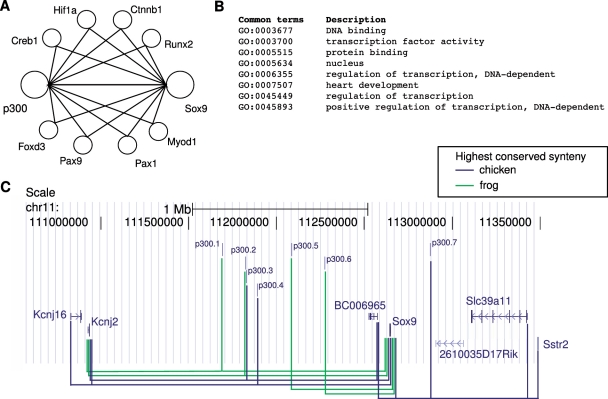Figure 2.
We hypothesize that the enhancer binding protein and its target genes show a tendency for shared functions such as `transcription factor activity' and are located in the vicinity of one another in the protein–protein interactome. This is illustrated in the example of the potential regulation of Sox9 by p300. (A) PPIs involving p300 and SOX9. p300 and SOX9 directly interact with one another (40), and also share a number of known or predicted intermediary interaction partners in the protein interaction network (34). (B) SOX9 has 21 GO annotations, and p300 has 35 GO annotations. The eight shared annotations are shown. (C) UCSC Genome Browser view on the Sox9 locus. Seven p300 enhancers from mouse limb tissue (6) show the highest degree of conserved synteny with the Sox9 promoter region, however, only the enhancers p300.5 and p300.6 can unambiguously be assigned to the Sox9 promoter. For the remaining enhancers, multiple genes including Sox9 exhibit the same degree of conserved synteny. However, high GO similarity between p300 and Sox9 as well as their proximity in the PPI network suggest that the target gene of these enhancers is Sox9.

